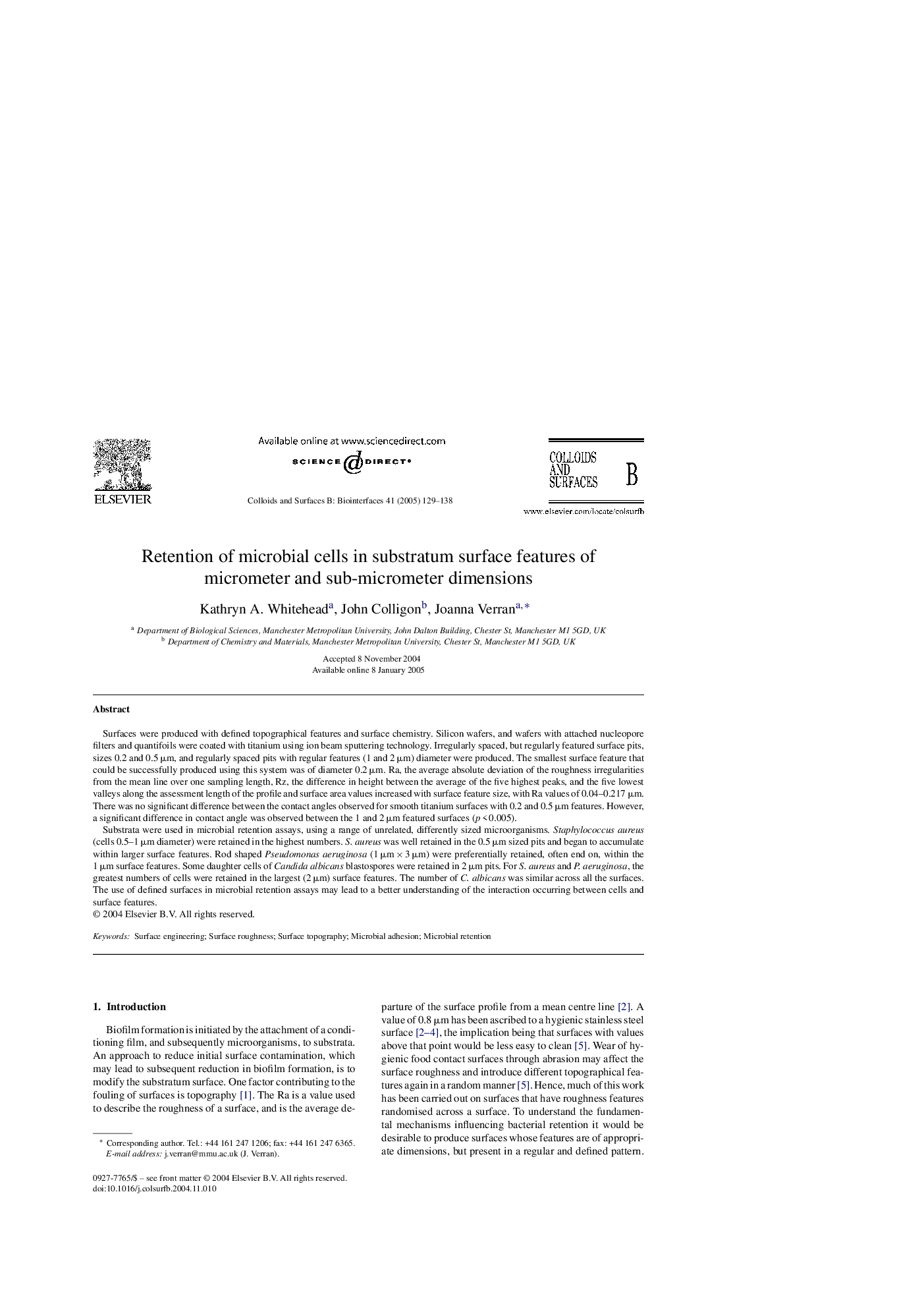| Article ID | Journal | Published Year | Pages | File Type |
|---|---|---|---|---|
| 9678393 | Colloids and Surfaces B: Biointerfaces | 2005 | 10 Pages |
Abstract
Substrata were used in microbial retention assays, using a range of unrelated, differently sized microorganisms. Staphylococcus aureus (cells 0.5-1 μm diameter) were retained in the highest numbers. S. aureus was well retained in the 0.5 μm sized pits and began to accumulate within larger surface features. Rod shaped Pseudomonas aeruginosa (1 μm Ã 3 μm) were preferentially retained, often end on, within the 1 μm surface features. Some daughter cells of Candida albicans blastospores were retained in 2 μm pits. For S. aureus and P. aeruginosa, the greatest numbers of cells were retained in the largest (2 μm) surface features. The number of C. albicans was similar across all the surfaces. The use of defined surfaces in microbial retention assays may lead to a better understanding of the interaction occurring between cells and surface features.
Related Topics
Physical Sciences and Engineering
Chemical Engineering
Colloid and Surface Chemistry
Authors
Kathryn A. Whitehead, John Colligon, Joanna Verran,
